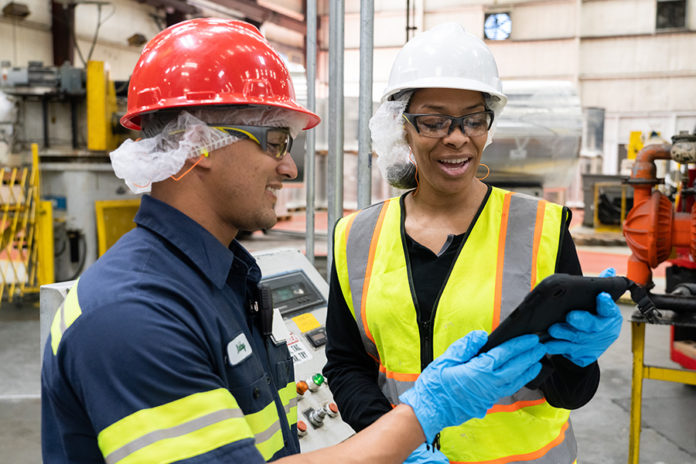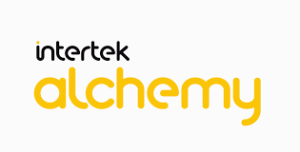
By Holly Mockus
Article Sponsored By: Intertek Alchemy
The great resignation continues to roll on as a record 4.5 million people reportedly quit their jobs in the U.S. last November. Now every industry is challenged more than ever to hire and retain enough workers to meet demands, especially food manufacturers.
If left unchecked, manufacturing can embody some of the issues that drive workers to leave their jobs. Work can become monotonous, isolating, and lack a clear path to growth. In this scenario, employees might hope to transfer to other jobs within their companies or find themselves trapped in the same old day-to-day jobs until something better comes along.
According to the latest research by Deloitte and The Manufacturing Institute, 2.1 million manufacturing jobs are likely to go unfilled through 2030, severely impacting U.S. company revenues and production to the tune of $1 trillion.
The chief complaints recorded by departing employees seem to include:
• Overwork and stress
• A feeling of being trapped in their jobs with no potential for advancement
• Limited visibility to how their jobs impact overall company goals
• A lack of inclusion
• Safety concerns, especially during the pandemic, and the feeling that no one listens or cares.
Rather than building processes and programs to address these challenges, many employers fall back on perks, hiring bonuses, increased wages, and better benefits. But that’s clearly not working anymore. Food manufacturers need to leverage every tool possible to not only recruit new employees but ensure they’ll stick around for a long while.
For many successful manufacturers, employee retention starts on day one with effective training. Over the last two decades, Intertek Alchemy has been working with companies to help them make the most of training as a means to retain and attract employees.
Here are six basics we encourage every manufacturing client to consider.
1. Separate orientation from onboarding
Employee onboarding and orientation are often considered to be the same. They’re both usually introduced to employees on their first few days at work. And they provide the common purpose of introducing the company and job roles. But in reality, they should serve two entirely different functions and be rolled out as separate training processes.
Employee orientation should serve as an introduction to the company, sharing your history, mission, and vision and reinforcing the employee’s decision to join your company. These sessions offer an opportunity for employees to meet their peers and leaders and be introduced to their work environments. By creating a welcoming environment during orientation, you set the tone for the rest of their time with the company.
On the other hand, the onboarding process should introduce employees to their job duties, including tools and resources like PPE and emergency action plans. This is the time to train and equip them with what they need to succeed at their jobs. Help them identify potential hazards and show them how to report site-specific hazards. Also, during this time, explain the overall manufacturing process and how each job ties into the next.
2. Diversify communications and training
When talking with our clients about training, it’s clear that no one organization has a single group with the same learning styles and languages. Employees come from all different walks of life, age, language backgrounds, existing skills, and other factors that make them unique. There is no one-size-fits-all program that will connect with everyone. And that’s why many manufacturers are creating agile training programs to communicate with multiple audiences.
The pandemic has shown us that varying delivery methods can be powerful and allow people to train at their own pace. The same function or topic can be taught in various ways, whether in a classroom, training on the job, eLearning, or training over kiosks. Classroom training, for example, can provide critical safety and regulatory training to large groups at once. When using a platform like Intertek Alchemy, facilitators can provide training in multiple languages, and discreetly monitor learners needing further coaching. And eLearning fits the bill for workers who need additional reinforcement, or for those motivated to take advanced topics. And finally, one-on-one coaching can play an instrumental role for many workers and topics. Mobile tools, like Alchemy Coach, can help ensure supervisors provide meaningful and consistent coaching with automatic documentation.
3. Cross-train early and often
The pandemic has taught us that flexibility is essential to keeping a manufacturing floor running 24 hours a day. That means having trained and ready employees to perform other jobs when their co-workers quit or call in sick.
Cross-training helps employers have a workforce that can easily and quickly fill open positions. It can also help cover periods of high demands for specific products. But it can also help improve employee retention by offering a career path, community, safety, and a sense of value and structure. Employees will feel important by your willingness to invest in their future with the company. Instead of competing on compensation alone, cross-training can help create a work environment that enables you and your employees to grow together over the long haul.
4. Make connections with on-the-job training
On-the-job training (OJT) remains popular among companies that prefer their employees to learn by doing. This instruction style is far more engaging than most classroom training, and workers can stay on the floor where they’re productive.
This approach helps close the generational gap on the floor and connects people across multiple lines and shifts. But for OJT to be effective, you have to structure training to meet your specific needs and ensure instructors are guided and held accountable. Training must also be reportable when an audit reaches your door.
5. Incentivize employees to learn and grow
Companies often reward employees for the number of years on the job instead of what they’ve learned or accomplished. A junior employee who has shown initiative and done more might be paid less than the longer-tenured employee who has maintained the status quo. This provides no incentive to branch out and take on more responsibilities.
One option would be to match pay with skills, providing greater compensation for employees who take on new training. Intertek Alchemy provides tools to train and track employee skills that you can associate with greater pay. Compensation can be tied to initiative and ambitions, leading to advancements within your company.
6. Explain the why and the how
Throughout your training programs, always emphasize the “why” in addition to the “how.” And remember that training is a two-way street, which means asking and listening to employees about how they will utilize what they learn. Discover how they feel about their training experience and the resources they’re using.
You’ll find that some programs are winners, and some are losers. And in the process, you’ll convey their importance and relevance to the program and encourage your employees to contribute in ways that will make you and them more effective.
Making your employees feel as if they’re part of the process will foster valuable relationships, which can help reduce their chances of leaving for another job.
Intertek Alchemy can help
All of these recommendations are centered around training and cultivating the people who make a difference in your organization. Intertek Alchemy works with food manufacturers of all sizes, including 68 of the top 100 companies, to provide training that keeps foods and employees safe. We provide industry-vetted courses to deploy within your organization immediately, which companies can easily customize to add site-specific details. But training is not a one-time exercise. Alchemy Coach and Alchemy Playbook mobile technologies equip organizations with tools to create a continuous learning environment and reinforce training on the floor.
Contact us to learn how Intertek Alchemy can help create or transform your training to attract and retain workers during this historic labor shortage.








